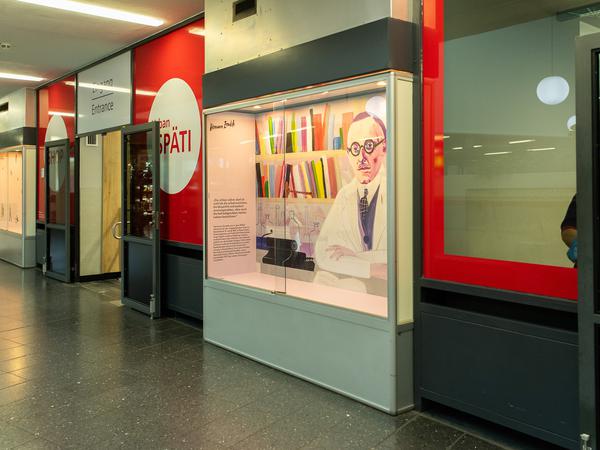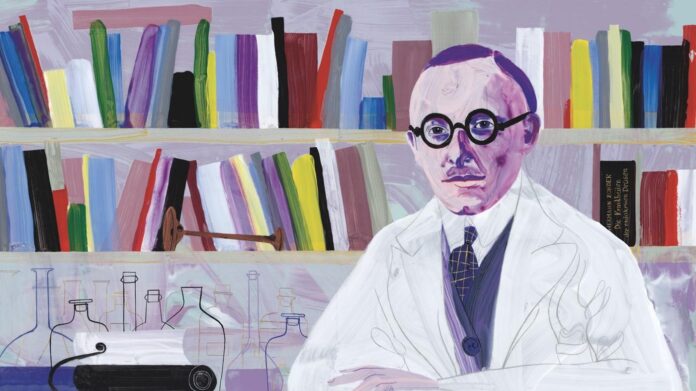Red flags with swastikas hang at the Urban Hospital. Dark figures guard the entrance. It is March 11, 1933, when the National Socialists storm the clinic in Kreuzberg and also dismiss Hermann Zondek, the medical director, with immediate effect. He flees to Switzerland on the same day. Germany loses one of the most respected doctors of its time.
A new exhibition entitled “Zondek – Doctor at Urban”, which can be seen until the end of December in the foyer of the hospital where he once worked, tells the story of the life of the Jewish scientist and doctor who has so far received little attention in the culture of remembrance.
Born in 1887 in Wronke near Posen, Zondek studied medicine in Göttingen and Berlin. He taught as an associate professor at the Charité and from 1925, as its director, he developed the Urban Hospital into the most important clinical endocrinology center in Germany. In addition to his excellent reputation as a hormone researcher, Zondek was highly respected as a doctor. His patients included Chancellor Kurt von Schleicher and the then Foreign Minister Gustav Stresemann.
Bridge to people with exile history
After his expulsion from Germany, Zondek emigrated to Palestine in 1934 with his wife Elly and their two children, via stops in Switzerland and England.

© art/beats
Using seven large-format illustrations, short explanatory texts and quotations distributed on both sides of the entrance area in Urban Hospital, the exhibition highlights an episode from the doctor’s life – from his time at the “Urban”, through expulsion and exile to his life in Jerusalem.
“Many people who work or are treated at Urban Hospital also have a history of exile,” says Ruth Ur, managing director of the Yad Vashem Friends Association, who designed the exhibition. “With this installation, we also want to build a bridge to them.”
It was particularly important to her that the installation was not housed in a separate room, but was integrated into the everyday life of the hospital. The individual elements are now embedded between the flower shop and snack machine, waiting benches and hospital library. Patients and employees pass by them regularly in their everyday lives.
Multi-layered illustrations by a Berlin artist
The pictures are by the Berlin illustrator Romy Blümel, whose work has already appeared in books and magazines such as the “New Yorker”. At first glance, they look like particularly beautiful, colorful children’s book illustrations. If you look closer, you will discover fine, black drawings with lots of details to discover. Blümel works in several layers, for example, she draws on glass and initially paints in reverse.

© art/beats
“Even though it is a difficult topic, we wanted to create something beautiful that improves the atmosphere for doctors and patients and at the same time has depth,” says Ruth Ur, who advocates creating new forms of culture of remembrance in public spaces. There are voices that advocate for the bank in front of the Urban Hospital to be named after Zondek. In Kreuzberg, streets are already named after doctors such as Albert Fraenkel and Werner Körte, who practiced at the Urban Hospital.
“Hermann Zondek is very well known in Israel. Many people know his name,” says Ruth Ur, whose father was a doctor himself and met Zondek and his brother, the gynecologist Bernhard Zondek, in Jerusalem. After his escape, Zondek initially headed the Bikur Cholim Clinic and then opened his own practice.
His reputation as a renowned physician spread quickly. For example, he also treated members of the Jordanian royal family. In 1951 he was appointed professor of endocrinology at the Hebrew University in Jerusalem. He died in 1979 at the age of almost 92 in Jerusalem, of which he was an honorary citizen. Some of his personal items from Berlin are now on display at the Yad Vashem International Holocaust Memorial. Despite many invitations from friends and colleagues, he never returned to Berlin.
